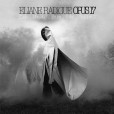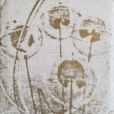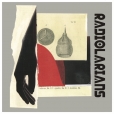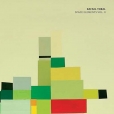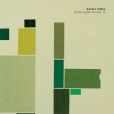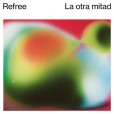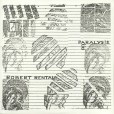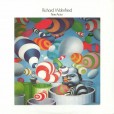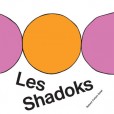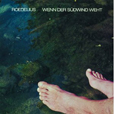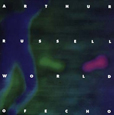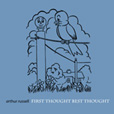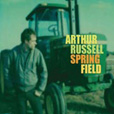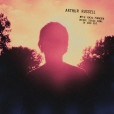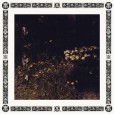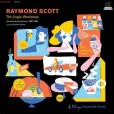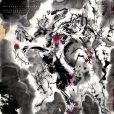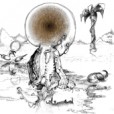Your basket is empty

The CD is from Important.
‘Dave Cudlip’s debut album, inaugurating the highly promising, experimental label Klang Tone (spawn of the estimable Stroud record shop): a stunning and unique combination of ethereal ambient soundscapes, undulating rhythms, and atonal sound collage, with Harmonia and Autechre looming amongst its forebears.’
The return of Jim O’Rourke’s Moikai imprint, after an interlude of two decades.
‘Threading together twelve distinct episodes into a flowing whole, Spectral Evolution alternates moments of airy instrumental interplay with dense sonic mass, breaking up the pieces based on chord changes with ambient ‘Spaces’. At points reduced to almost a whisper, at other moments Toral’s electronics wail, squelch, and squeak like David Tudor’s live-electronic rainforest. Similarly, his use of the guitar encompasses an enormous dynamic and textural range, from chiming chords to expansive drones, from crystal clarity to fuzzy grit: on the beautiful Your Goodbye, his filtered, distorted soloing recalls Loren Connors in its emotive depth and wandering melodic sensibility…
‘Spectral Evolution is the quintessential album of guitar music from Rafael Toral.’
In its entirety for the first time ever, the soundtrack of the wonderful French TV cartoon series, aired between 1968 and 1974. The GRM luminary goes to town: ‘a fascinating and bizarre collage of wacky electro pop (à la Jean-Jacques Perrey), drones, musique concrète, classical, and dadaist sound experiments seamlessly mixing into a cohesive and cinematic listening experience.’
‘The most vivid rhythmic reality’: cello, voice, echoes. Drumless versions of Let’s Go Swimming, Tree House, Wax The Van; four previously unreleased tracks from Sketches From World Of Echo.
‘The compilation that started the renaissance… twelve tracks of Buddhist Bubblegum Alt Disco Pop recorded during Arthur’s prime years 1985-90.’
‘An intimate unedited solo live performance recorded at Phill Niblock’s Experimental Intermedia Foundation in Downtown NYC on 12/20/85. Arthur titled this performance Open Vocal Phrases, Where Songs Come In and Out. He would later edit sections from this performance merging it with studio material recorded at Battery Sound to finalize the World of Echo album released in 1986.’
“Some of it sounds so pure and clear and I am picturing him huddled around all that gear, simply magical. In my memory he didn’t play “for” the audience but was rather trying to perfect these various permutations of sound within himself…and a few of us just happened to be present” - Tom Lee
The double vinyl LP includes the complete nineteen-minutes-plus version of Tower of Meaning/Rabbit’s Ear/Home Away along with the previously unreleased songs That’s The Very Reason and Too Early To Tell. Also two instrumental tracks from Sketches For World Of Echo, originally published in 2020 as a cassette.
The double CD includes both Open Vocal Phrases and Sketches For World Of Echo, in full.
No-one else makes music like this: devilishly complex but warm and intuitive, stirring together a dizzying assembly of outernational and outerspace influences, whilst retaining the subby funk-and-hot-breath pressure of Shackleton’s soundboy, club roots.
The result is an evolutionary, truly alchemical music — great shifting tides of dub, minimalist composition and choral song (Five Demiurgic Options); ritual spells to ward off the darkness (Before The Dam Broke, The Prophet Sequence); radiophonia and zoned-out guitar improv (Seven Virgins); even the febrile, freeform psychedelia of eighties noise rock (Sferic Ghost Transmits / Fear The Crown).
Over the five years since Music For The Quiet Hour, Vengeance’s vocal and lyrical range has rolled out across this new terrain. Throughout these six transmissions he’s hoarse preacher, sage scholar and ravaged bluesman; blind man marching off to war, and exhausted time-traveller warning of impending socio-ecological catastrophe.
Six dialogic accounts of our conflicted times, then, expanding beyond the treacly unease of the duo’s early collaborative work into something subtler and more emotionally shattering — its shades of brightness more dazzling, and its darkness even murkier.
“We almost didn’t hear it when the foundations went.”
